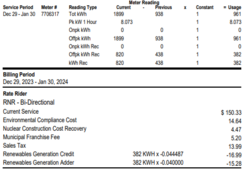Tulex
Solar Wizard
Maybe. We've all been scammed, and it really always falls on us.That is a bit harsh, even I have been scammed and I'm the tightest butthole on this forum I can guarantee it LOL
When I started my venture into solar, the first thing I did was research. And the first thing I learned was how much I didn't know. But, through the years, I've come to understand that about myself. Even now I may have done some things differently. But again, that's on me.




